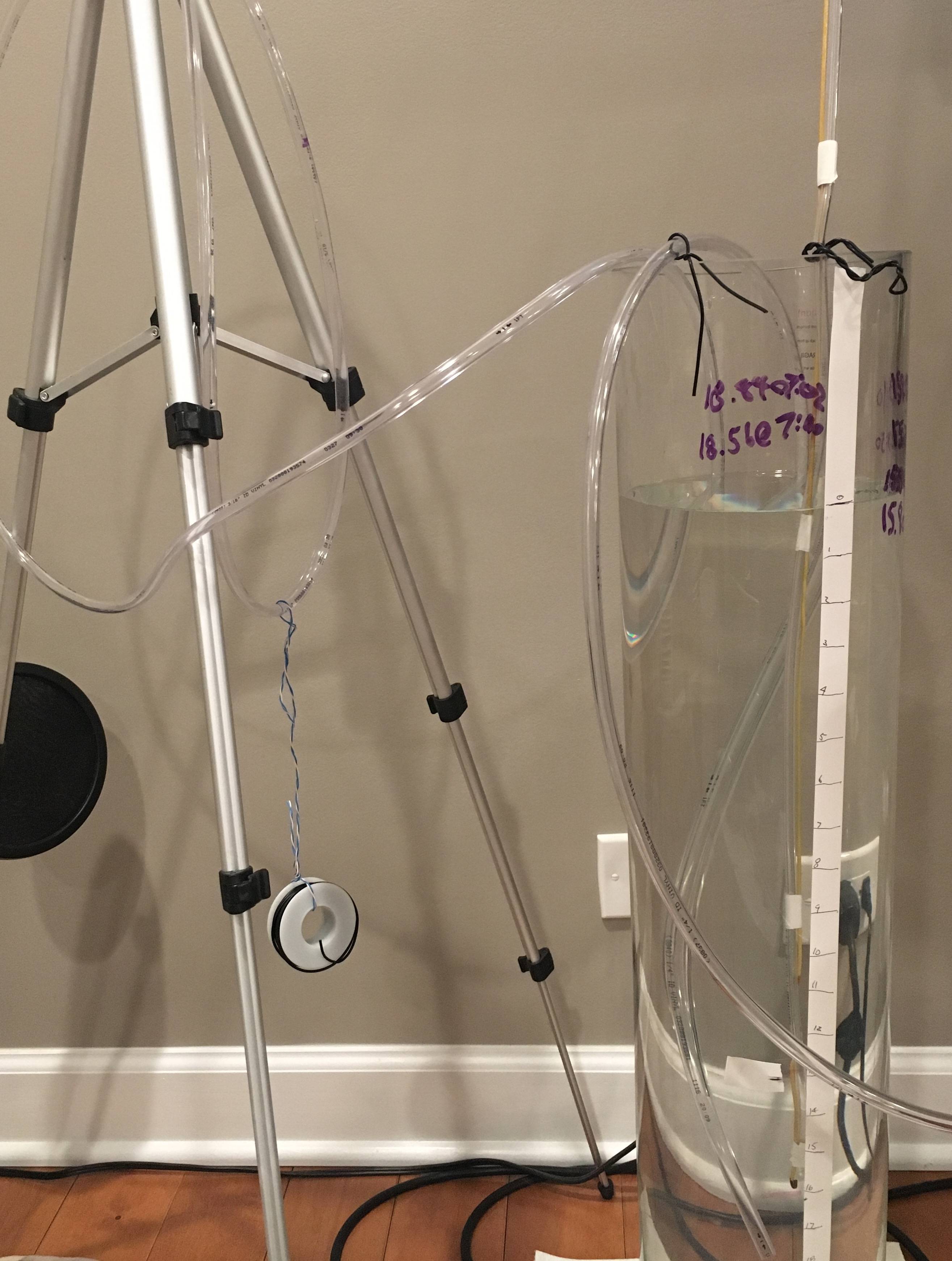I am measuring water level in a 25-inch tall vase using hydrostatic pressure. Like this.
To do this I have a 1/4 OD inch nylon tube connected to a gauge pressure transducer. So far it has been very accurate. If I put the tip of the tube into 1-inch of water I read 1-inch. Same if I dip the tube down to 24-inches of water and anywhere in between.
But I noticed when I leave it sit overnight that in the morning (the tube was submerged all night) that there is a significant error. When I pull the tube out of the water I see some water remains in the tube (about the same amount as the error). If I tap the tube and get all the water out it becomes accurate again.
So my question is what is causing this. Where is the air pressure going? I've tried to seal the fitting between the sensor and tube the best I can. It is already a pretty tight fit. It is one continuous tube. Incase there was a pinhole I've tried multiple tubes and all seem to yield similar results.
Is it feasible for a system like this to work for multiple months at a time without draining the water out of the tube all the way?
I graphed the output with tube at a constant depth and here are the results. I started at 15.9" of water at ~2:00 pm and by 8:45 pm the reading is 15.1" of water.
In case the details matter here is what I am using:
- MPX5010GP - pressure gauge
- 1/4 inch OD (0.17" ID) vinyl tubing 6' long (like this one)
- 25" tall glass cylinder about 6" ID (see photo below) w/ 3 tubes running three tests
Added Info 9:43pm 5/2
Did another test to eliminate the sensor/tube junction. I put a loop in a tube and filled part of it with water (you can see it on the left side of the picture above. Purple mark is the water starting point). Then I pushed the other end of the tube into several inches of water which cause the water in the loop to rise. I've only had it there but it looks like the water in the loop is very slowly sinking which seems to yield the same result as the sensor. I am going to let this run overnight and check all measurements in the morning. Tomorrow I will buy different tubing to see if that has any effect on this.
Added Info 10:38pm 5/3
I did not lose much pressure in the loop. Maybe I did not have the tube deep enough in the water... Or worse there is a leak inside the sensor...


